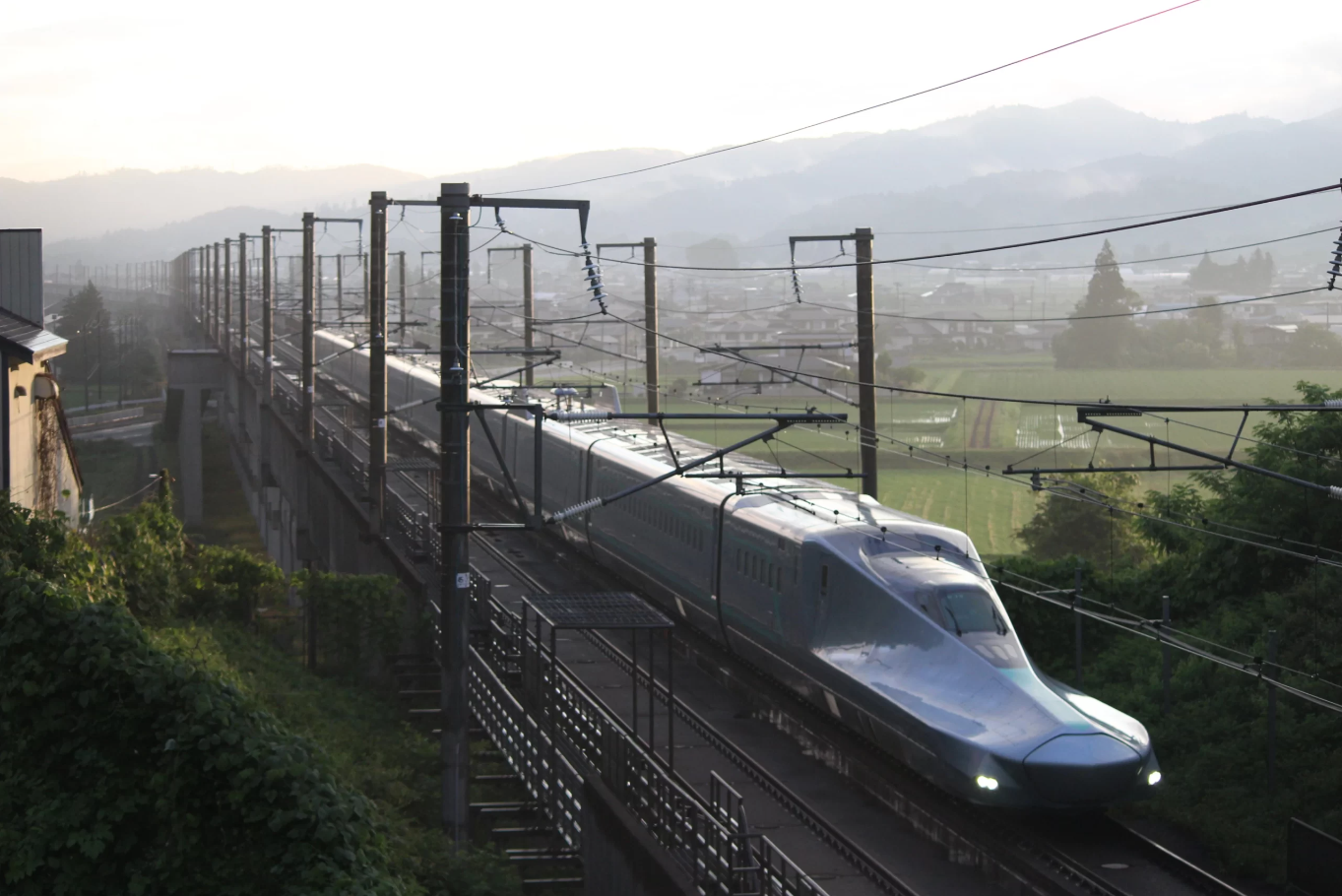Japan: From May 2019 to March 2022, JR East was conducting operational tests of a prototype E956 (ALFA-X) series train at a speed of 360 km/h, on the basis of which it is planned to begin production of new serial high-speed trains. Now some components of the train are being tested, and the possibility of switching to full automation of this rolling stock is being worked out. Experimental trains have been built throughout the history of Japan’s Shinkansen high-speed rail network to test new technologies and develop mass-produced trains. Takeshi Matsunuma, Editor-in-Chief of the Toyo Keizai media, has done an overview of the experimental high-speed trains, built since the early 1990s by Hitachi Rail and Kawasaki Rail based on the design projects of the Japanese rail operators.
Experimental high-speed electric train of 952/953 series (STAR 21)
It was designed in accordance with the JR East project in 1992. The name is derived from the abbreviation “Superior Train for Advanced Railway towards the 21st century”. The train consisted of nine cars divided into two separate “halves”, with the 952 series semi-set consisting of four cars with individual bogies for each car, and the 953 series semi-set consisting of five articulated cars that shared bogies.
STAR 21 was the first multiple unit train in Japan to use a variable-frequency drive in its electric motor. The main feature of the train was a double-siding aluminum body (long-length hollow extruded profiles welded by a continuous seal) manufactured by Nippon Sharyo. The assembly of several bodies was carried out by Kawasaki Rail using duralumin riveting based on experience in aviation. At that time, a single-siding aluminum body was just beginning to be introduced in the 300 series high-speed trains.
In addition, low-noise pantographs were installed on STAR 21, which were later implemented in E2 Shinkansen series electric trains. STAR 21 accelerated to 425 km/h while testing on December 21, 1993. A few years later, on February 17, 1998, STAR 21 was decommissioned. Now one semi-set is located at the Railway Technical Research Institute (RTRI) of Japan, and the other at the Sendai depot.
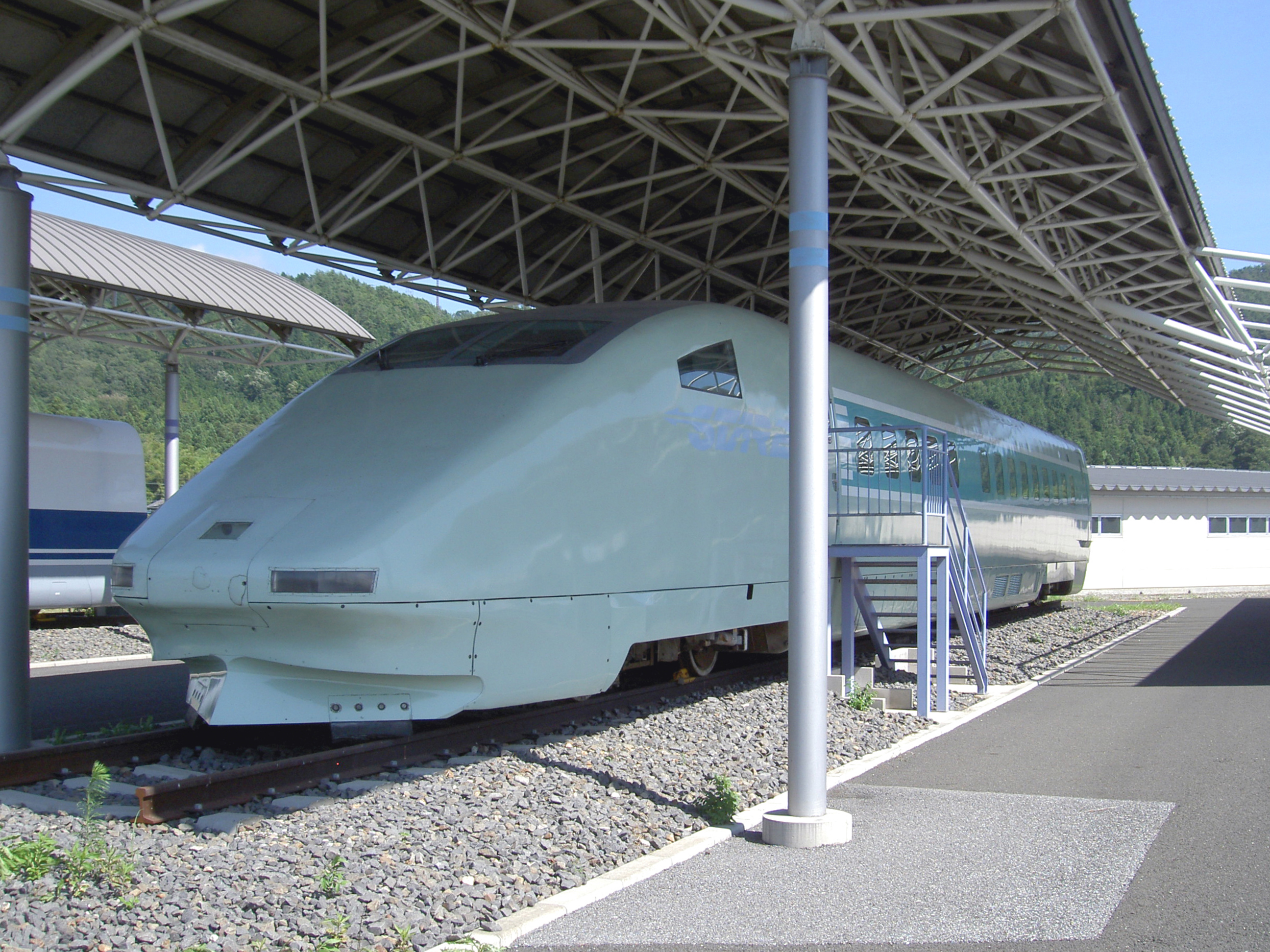 Semi-set of experimental 952 series (STAR 21) high-speed electric train at RTRI. Source: wikipedia.org
Semi-set of experimental 952 series (STAR 21) high-speed electric train at RTRI. Source: wikipedia.org
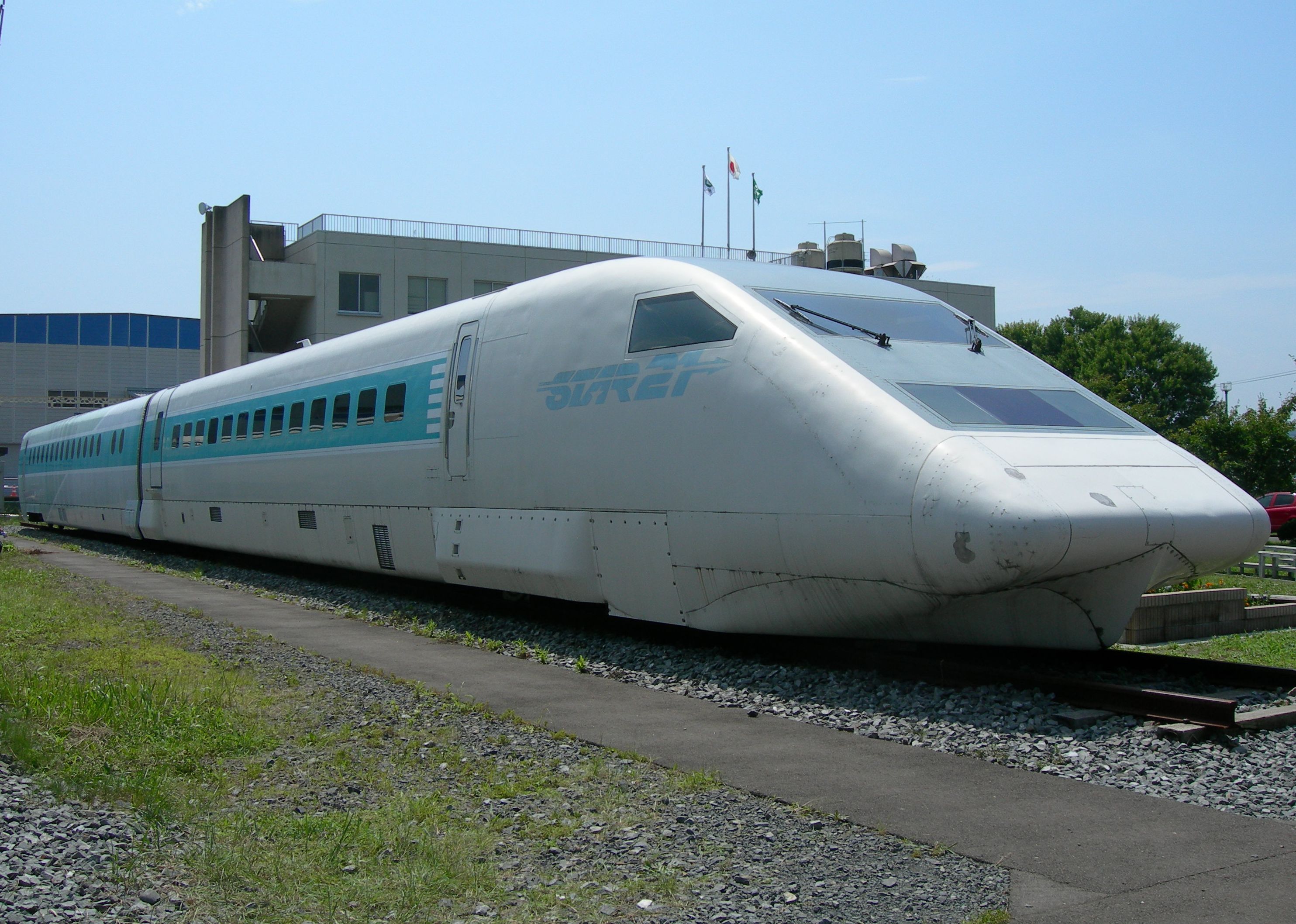 Semi-set of experimental 953 series (STAR 21) high-speed electric train at the Sendai depot. Source: wikipedia.org
Semi-set of experimental 953 series (STAR 21) high-speed electric train at the Sendai depot. Source: wikipedia.org
Experimental high-speed electric train of 500-900 series (WIN 350)
The name of the train is derived from the abbreviation “West Japan Railways Innovation for operation at 350 km/h”. Developed for JR West in 1992, on August 8 of the same year it accelerated to 350.4 km/h. Subsequently, it became the prototype for the creation of the 500 Shinkansen series serial electric trains, which production began in 1996. It is noteworthy that the noise level of the WIN 350 at a speed of 350 km/h did not meet the requirements, so its maximum operating speed was limited to 300 km/h.
The WIN 350 was the first high-speed train in Japan to be equipped with an air-suspended body tilt mechanism. In curved sections of the track, the air springs on the outer rail were raised and the air springs on the inner rail were loosened to tilt the car body down 1.7 degrees. In addition, two types of fully active suspension with hydraulic and pneumatic drive and a semi-active suspension with damping force switching were installed on the WIN 350 for the first time. It was decided to abandon the further introduction of body tilt mechanisms on serial high-speed trains since they caused the reduction of the train maximum speed. WIN 350 was decommissioned on May 31, 1996 and is now at the Hakata depot.
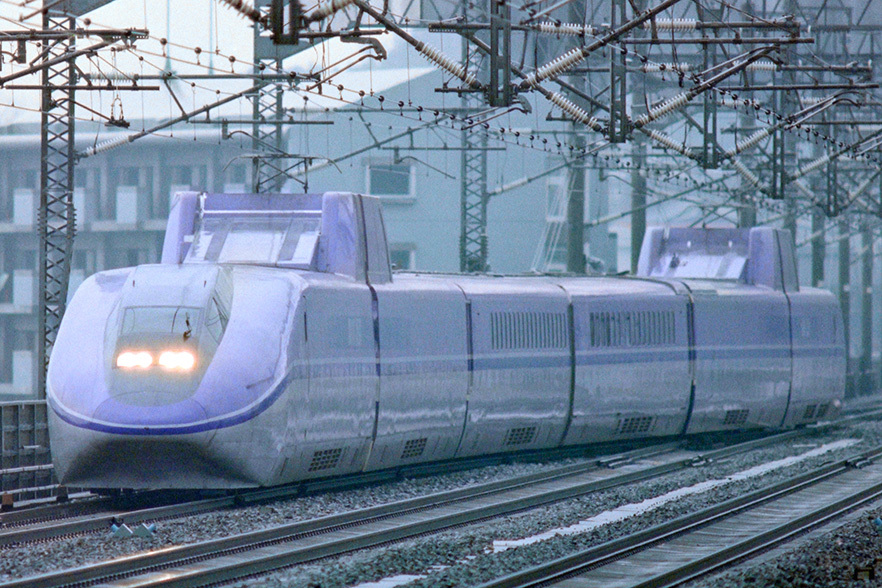 Experimental 500-900 series (WIN 350) high-speed electric train. Source: trunk_line, twitter.com
Experimental 500-900 series (WIN 350) high-speed electric train. Source: trunk_line, twitter.com
Experimental high-speed electric train of 955 series (300X)
Developed for JR Central in 1994 to test technology that will be included in future Shinkansen trains operating at or above 300 km/h. The height of the air spring support of the train bogie was 1,700 mm above the rail surface, and a ledge inside the car to store the air spring was constructed. The wheelbase of the bogie was 3,000 mm, which is 500 mm longer than usual. The 3rd and the 6th cars were equipped with a hydraulic cylinder-type body tilt mechanism. The design made it possible to tilt the car body by 3 degrees.
This train on July 3, 1996 set a national speed record for the railways of Japan, accelerating to 443 km/h. This record has not been broken to this day. It was decommissioned in 2002 and is now on display at the SCMaglev and Railway Park in Japan.
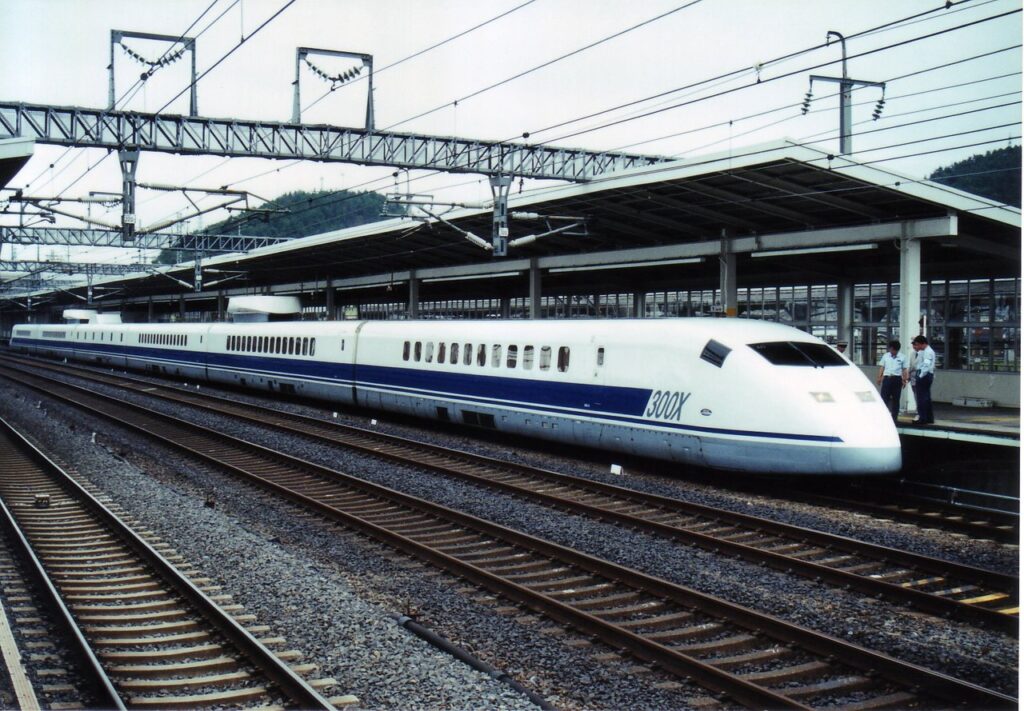 Experimental 955 series (300X) high-speed electric train during a daytime test run at Maibara Station, July 1999. Source: wikipedia.org
Experimental 955 series (300X) high-speed electric train during a daytime test run at Maibara Station, July 1999. Source: wikipedia.org
Experimental high-speed Fastech 360S and Fastech 360Z electric trains
The Fastech 360S was intended for operation on the Shinkansen network and was produced in 2005, while the Fastech 360Z, designed for operation on conventional railway lines with a gauge of 1,067 mm, was manufactured a year later, in 2006. It is worth noting that the head car and the next two were made by Hitachi Rail, and the rest, from the 4th to the 8th, by Kawasaki Rail. Fastech also encountered various challenges while running at the maximum speed of 360 km/h, so its operating speed has been set at 320 km/h. After tests that took place on December 12, 2008, the Fastech 360Z was sent for recycling, and the Fastech 360S suffered the same fate on September 7, 2009. Although Fastech 360 was not tested for speed records, it was able to accelerate to 398 km/h in tests.
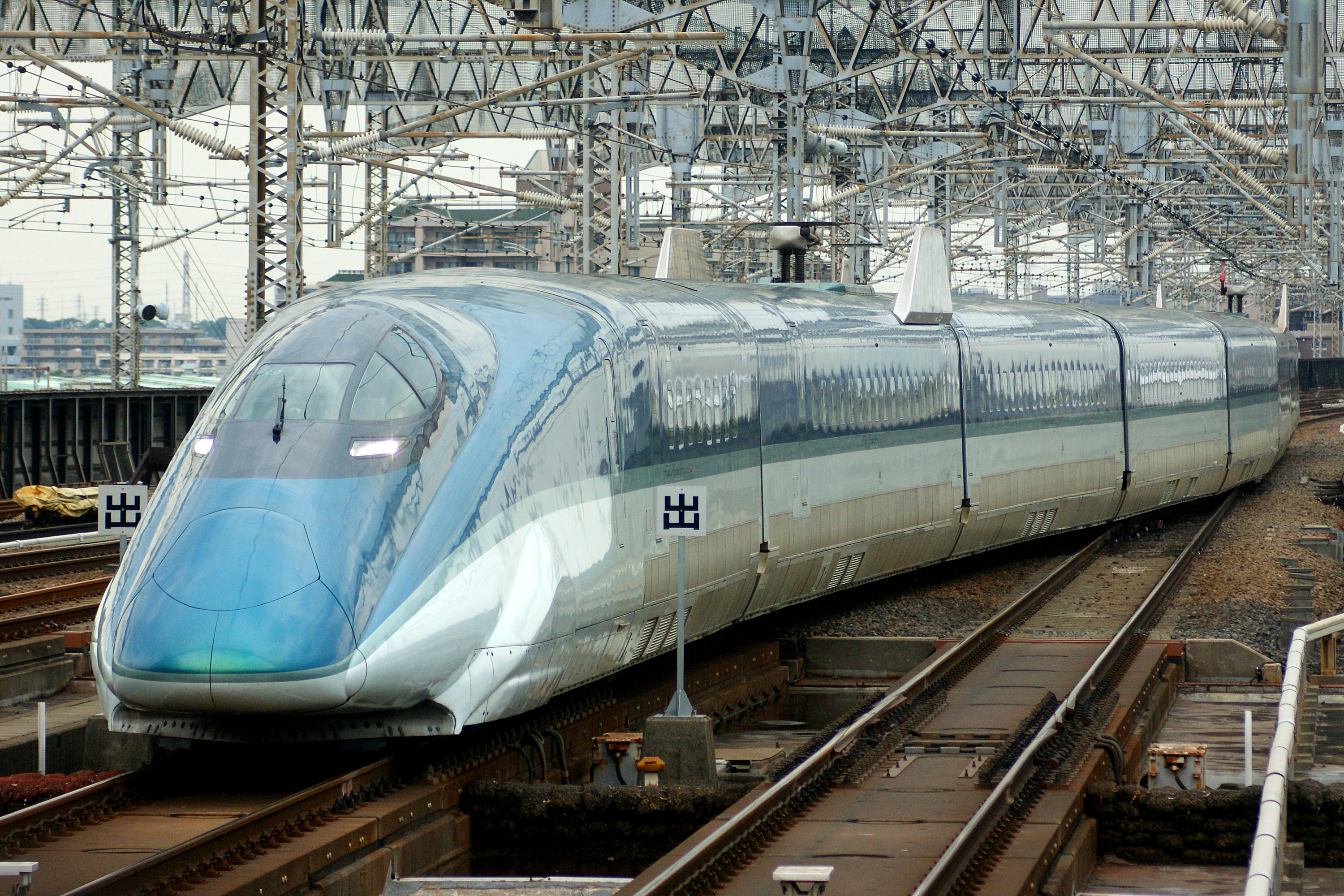 Experimental Fastech 360S high-speed electric train. Source: wikipedia.org
Experimental Fastech 360S high-speed electric train. Source: wikipedia.org
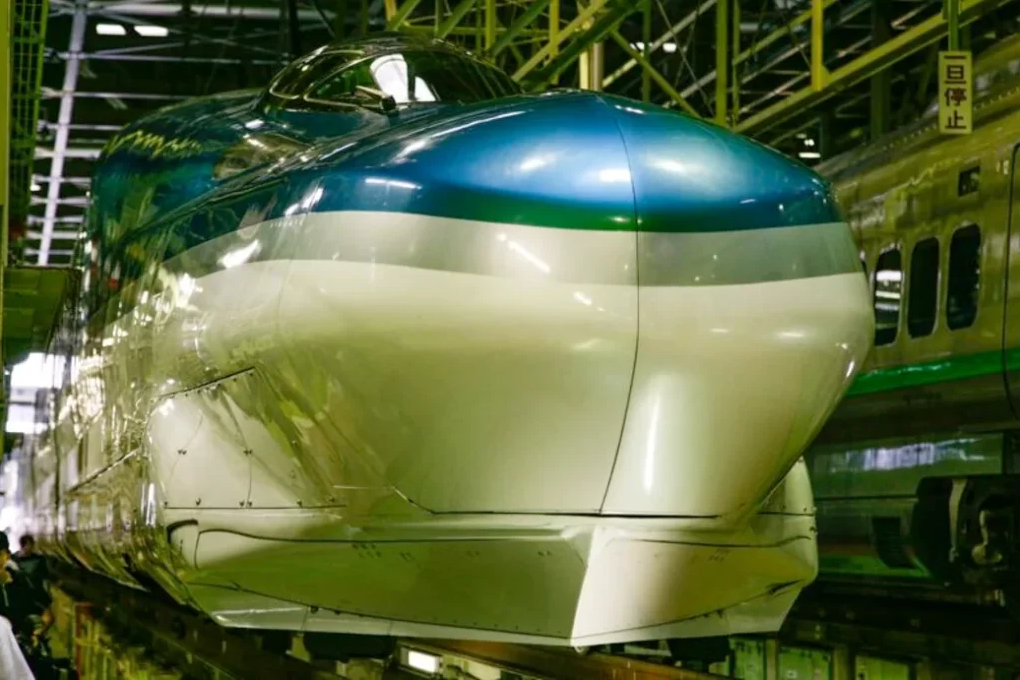 Experimental Fastech 360Z high-speed electric train. Source: Takeshi Matsunuma, Toyo Kezai
Experimental Fastech 360Z high-speed electric train. Source: Takeshi Matsunuma, Toyo Kezai
Experimental high-speed E956 series electric trains (ALFA-X)
The name is derived from the “Advanced Labs for Frontline Activity in rail experimentation” acronym. The 10-car ALFA-X train built jointly by Hitachi Rail and Kawasaki Rail was introduced in 2019 to test technologies that will be included in future trains for speeds up to 360 km/h. Like the Fastech 360, the ALFA-X is equipped with aerodynamic emergency brakes in the form of hydraulically actuated roof-mounted flaps.
Trials of the experimental E956 series (ALFA-X) high-speed train by JR East in 2022. Source: Это железная дорога!, youtube.com
Linear eddy current brakes are additionally provided on some bogies. The train bogies are also equipped with earthquake-resistant components (yaw dampers and crushable cushions). In addition, low-noise current receivers were developed, and the design of the brake discs was also redesigned to reduce the noise level. Thus, the position of the rear ribs of the brake pads was changed. Ride comfort is provided by reinforced shock absorbers and vibration dampers that minimize vertical vibrations. The body tilt device supports a speed of 360 km/h and has a tilt angle of 2 degrees, which corresponds to Fastech 360.
The ALFA-X tests were completed in March this year, and its results are now being reviewed.
Based on the article “Shinkansen: the line of experimental trains” from the Toyo Keizai media. Adopted to English and enlarged by ROLLINGSTOCK Agency.





